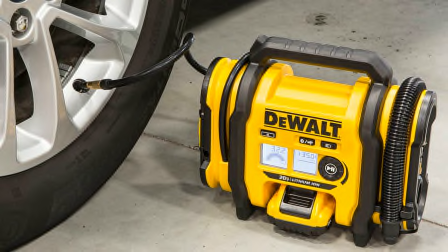Pay attention to the paint. Regular car washing and waxing help preserve a car’s paint from corrosive salt, bug splatter, bird droppings, and road grime. Despite what the ads may say, no wax job lasts more than a few weeks at best. Paste wax isn’t necessarily better than liquid wax, and premium brands don’t necessarily outlast lower-priced alternatives. (See our car wax buying advice and learn more about how to get the most out of a car wash.)
Be a serious scheduler. It’s essential to follow the owner’s manual recommendations for oil-change intervals and major services, such as replacing the timing belt. While we don’t suggest having major work done more often than the manual says, in some cases it may be advisable to increase the frequency of maintenance intervals. For example, drivers who frequently tow or regularly drive in hot, dusty conditions may want to perform oil and filter, air filter, and brake services more often. It’s best to discuss your needs with your mechanic.
Join a club. A motor club, such as AAA and Better World, can be a lifesaver. They supply 24-hour roadside assistance if you break down, get a flat, or need to be towed. Plus, various discounts are often associated with membership, such as for rental cars or hotels. Your auto insurance company or even your cell phone provider may be affiliated with a motor club, as well. In addition, some credit cards and new cars come with free roadside assistance.
In addition, pay attention to specific Reddit communities or online forums that focus on your vehicle. There’s a wealth of information from owners who may already have experienced the same problem you’re facing.
Renew the wipers. Windshield wipers don’t last forever—figure six months, at best, before they start leaving streaks. In addition to making it hard to see in the rain, if the wiper rubber disintegrates and flies off, the motion of the bare wiper arm on the windshield can indelibly scar the windshield in minutes. We have found that midlife, after a few months of use, wipers can often be renewed with a glass cleaner and a paper towel. (See our wiper buying advice.)
Keep extra fluid. It’s a good idea to keep a bottle of windshield wiper fluid on hand, either in your garage, a basement, or even a storage closet. This is especially necessary in the winter, when running out of fluid can make cleaning your windshield a frustrating mess. While water can serve in a pinch, you don’t want to use it regularly. Water can freeze in the winter, which will harm the storage tank, hoses, and nozzles when it expands and refreezes. Plus, it lacks the special additives to clean off grime like bug carcasses and road grit. Keep a funnel with the jug to make it easier to pour into the tank.
Keep your papers handy. It’s a good idea to keep all your repair-related receipts in the car. That way, the dated service records and perhaps warranty cards for new tires, batteries, mufflers, and so on are handy when needed. Always keep your car’s registration certificate and your insurance card in the vehicle. But keep your car’s title certificate at home under lock and key.
Consider local shops vs. dealerships. Local repair shops are generally less costly because they have lower labor rates than franchised dealerships and often charge less for parts. Franchised dealer service departments, though, specialize in your brand, and their technicians have access to specialized tools and training. In our surveys, subscribers routinely report higher satisfaction with independent shops.
Choose a local mechanic. Ask your network of family and friends for service-shop recommendations. Shops with well-qualified mechanics often display a sign or certificate from ASE, a national certification organization. But that doesn’t ensure that all workers have the same certifications or that the person wrenching on your car is certified. Garages affiliated with AAA are good bets. And wherever you regularly have repair work done, try to establish a relationship of trust and respect. Dealerships and local shops often cut more slack to loyal customers.
Conduct a “tire drill.” You’re almost sure to get a flat tire once. If you’ve never changed a tire, practice installing your spare using the jack and tools that came with the car. The owner’s manual will tell you how. (In addition, read our advice on how to change a tire.) Ask an experienced friend to help out the first time, though. An older car’s wheel lug nuts or bolts can be stubborn to remove.
If the wrench supplied with your vehicle isn’t up to the task, consider buying a long torque wrench or a "breaker bar," along with a deep socket from an auto parts store, and leaving them in your trunk. Flat tires can often occur at inconvenient times. A little preparation can help get you on the road quicker and with less stress.
Many new and late-model vehicles no longer come with a spare tire. Instead, the automaker will typically equip the vehicle with a can of tire sealant and a DC-powered air compressor. Minor punctures through the tread can be addressed with this gear. But if the puncture is large or penetrates the sidewall, help will be needed. Keep in mind that successfully sealing the tire is only a temporary repair that’s meant to get you safely to a repair shop.
To learn more, see our guide to car maintenance.





















